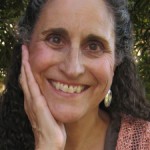Meet-the-Author Recording with Patricia Newman
Plastic, Ahoy!: Investigating the Great Pacific Garbage Patch |
Patricia Newman introduces and shares some of the backstory for creating Plastic, Ahoy!: Investigating the Great Pacific Garbage Patch.
Translate this transcript in the header View this transcript Dark mode on/off
Patricia Newman: Hello. I'm Patricia Newman, the author of Plastic, Ahoy! Investigating the Great Pacific Garbage Patch. I'd like to share the story behind this Green Earth Book Award winner and then read an excerpt.
The idea for Plastic, Ahoy! began with an article in my local newspaper about graduate students who organized a research trip to the growing plastic problem in the North Pacific Central Gyre. The Gyre is a massive area of open ocean surrounded by circling currents. This trip was one of the first expeditions to gather data from the Gyre, and its story showed how science could be fun and relevant. The nonfiction author in me wanted to know more. I found a raft of information -- mystery, adventure, tragedy, all the makings of a great read. But during the research and writing process, a new idea took hold. What if Plastic Ahoy helped readers change their habits? And what if my readers helped changed their parents' and classmates' habits?
Here's an excerpt from the beginning of Chapter Two, Garbage, Here We Come.
On August 2, 2009, Miriam, Chelsea, and Darcy sailed west as part of the Scripps Environmental Accumulation of Plastic Expedition (SEAPLEX). They headed toward an area of the Pacific Ocean full of millions -- maybe billions -- of plastic pieces. Scientists call the area the Great Pacific Garbage Patch. Racing boat captain Charles Moore discovered it in 1997. He found abandoned fishing nets, plastic bottles, bottle caps, toothbrushes, containers, boxes, and tiny pieces of plastic. The litter came from rivers and streams that flow into the ocean. It came from people visiting the beach or riding on ships who did not properly dispose of their plastic. Ocean currents carried it to the Garbage Patch.
Miriam and the other SEAPLEX scientists wanted to answer some important questions with their research. How much plastic was in the Garbage Patch? Were fish eating the plastic? And if so, were they dying because of it? Were the chemicals used to make plastic poisoning the water? Did plastic affect the food chain? Were any animals and plants living on the floating plastic? And if so, were the plastic homes poisoning the animals? Team SEAPLEX hoped to find the answers, but they also knew those answers would raise other questions.
As their ship, New Horizon, sailed farther from land, the trash detectives kept their eyes peeled. "We are hoping to see whales, birds, and maybe even some plastic," Chelsea wrote on the SEAPLEX blog, "It sounds sad to hope for trash but if we don't find any, we can't address any of our questions. Garbage, here we come."
This Meet-the-Author Recording with Patricia Newman was exclusively created in August 2015 by TeachingBooks with thanks to Millbrook Press.



